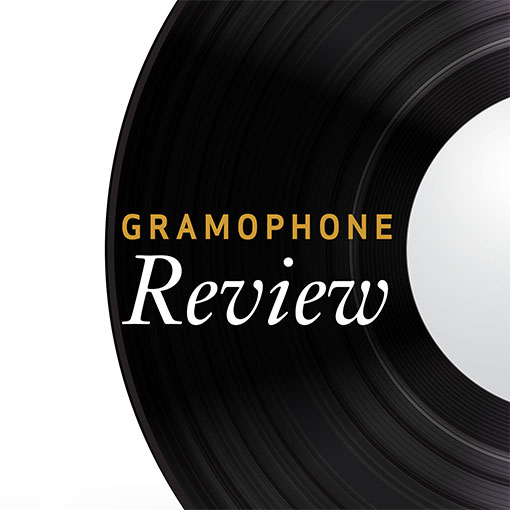Haydn Symphonies
View record and artist detailsRecord and Artist Details
Composer or Director: Joseph Haydn
Label: Philips
Magazine Review Date: 6/1993
Media Format: CD or Download
Media Runtime: 54
Mastering:
DDD
Catalogue Number: 434 096-2PH

Tracks:
| Composition | Artist Credit |
|---|---|
| Symphony No. 100, 'Military' |
Joseph Haydn, Composer
Frans Brüggen, Conductor Joseph Haydn, Composer Orchestra of the Eighteenth Century |
| Symphony No. 104, 'London' |
Joseph Haydn, Composer
Frans Brüggen, Conductor Joseph Haydn, Composer Orchestra of the Eighteenth Century |
Author: Richard Wigmore
Bruggen and his brilliant period orchestra give a strong, cogent performance of the Military. The first movement is quite broad and sturdy, less sportive than we often hear, the drama of the central development powerfully built; the minuet, too, tends to eschew charm, with its fiercely etched cross-rhythms––though I don't care for the added pauses in the trio; and the finale's darting wit can scorch and sting, with articulation of virtuoso precision and point from both strings and wind. In the Allegretto I especially relished the distinctive, soft-hued timbres of the period woodwind; but I did find Bruggen's tempo here a bit sedate, and was unconvinced by his short grace notes in bar four (and parallel passages elsewhere), which considerably alter the character of the theme. The crashing, jangling 'Turkish' instruments in the second and fourth movement make an appropriate din, though the bass drum is dull and unfocused. So, too, I'm afraid, are the timpani throughout––a serious miscalculation in this particular work, diminishing the force of Bruggen's taut, excitingly physical reading.
As you can hear from the various noises off, both these performances were recorded live, as is Bruggen's custom. And I'm relieved to say that the balance and focus in No. 104 are virtually ideal: except for over-reticent bassoons, wind and brass are that much more keenly defined than in the Military, and the dry thwacks of the hard-stick timpani have a tremendous impact. After a massive, brooding slow introduction, Bruggen gives plenty of space to the first-movement Allegro, phrasing the lyrical music warmly (the slight astringency of the orchestra's violins softened by a touch of vibrato) and bringing an acutely judged cumulative intensity to the development––though not everyone will like the surge of speed towards the climax (from 7'15'') and the ensuingrallentando. The minor-keyed eruption in the Andante is unusually disquieting, horns and trumpets grinding balefully; and despite the occasional rhythmic vagary, both the minuet and the finale are gloriously incisive and articulate, with Bruggen inspiring playing of incandescent intensity in the finale's closing pages.
On the rival period-instrument version Christopher Hogwood (L'Oiseau-Lyre) gives neat, genial, slightly lightweight performances, his tempos generally swifter than Bruggen's, his phrasing blander, his characterization less sharp and original. Hogwood's timpani are better defined in No. 100, though his armoury of Turkish percussion is unduly restrained. For all my provisos about the balance in the Military, Bruggen offers altogether more powerful, charismatic readings of both symphonies; and his London is, for my money, the finest of all his Haydn performances to date.'
As you can hear from the various noises off, both these performances were recorded live, as is Bruggen's custom. And I'm relieved to say that the balance and focus in No. 104 are virtually ideal: except for over-reticent bassoons, wind and brass are that much more keenly defined than in the Military, and the dry thwacks of the hard-stick timpani have a tremendous impact. After a massive, brooding slow introduction, Bruggen gives plenty of space to the first-movement Allegro, phrasing the lyrical music warmly (the slight astringency of the orchestra's violins softened by a touch of vibrato) and bringing an acutely judged cumulative intensity to the development––though not everyone will like the surge of speed towards the climax (from 7'15'') and the ensuing
On the rival period-instrument version Christopher Hogwood (L'Oiseau-Lyre) gives neat, genial, slightly lightweight performances, his tempos generally swifter than Bruggen's, his phrasing blander, his characterization less sharp and original. Hogwood's timpani are better defined in No. 100, though his armoury of Turkish percussion is unduly restrained. For all my provisos about the balance in the Military, Bruggen offers altogether more powerful, charismatic readings of both symphonies; and his London is, for my money, the finest of all his Haydn performances to date.'
Discover the world's largest classical music catalogue with Presto Music.

Gramophone Digital Club
- Digital Edition
- Digital Archive
- Reviews Database
- Full website access
From £8.75 / month
Subscribe
Gramophone Full Club
- Print Edition
- Digital Edition
- Digital Archive
- Reviews Database
- Full website access
From £11.00 / month
Subscribe
If you are a library, university or other organisation that would be interested in an institutional subscription to Gramophone please click here for further information.





